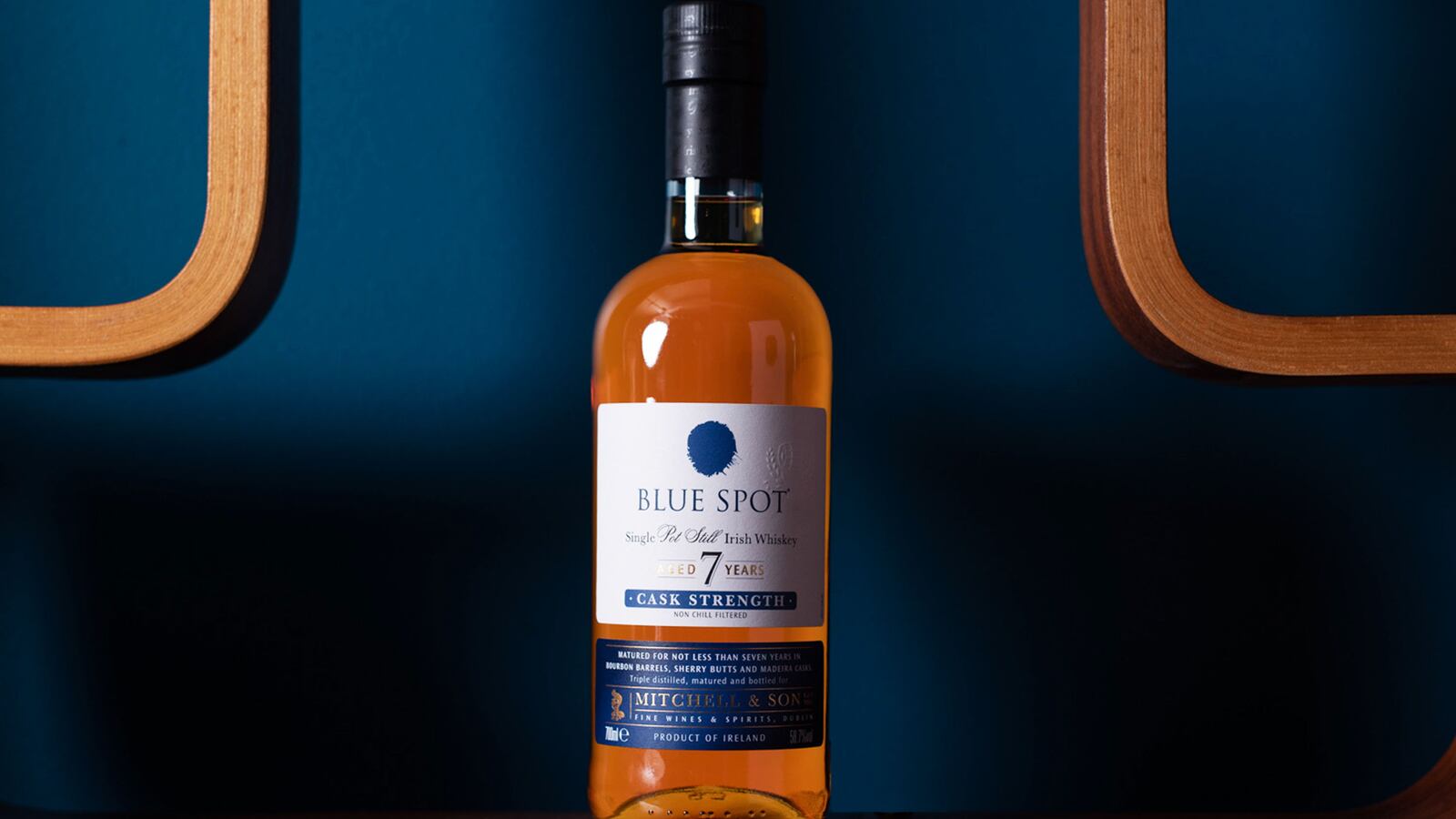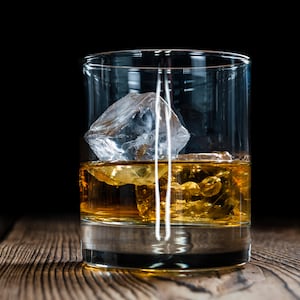I’ll never forget my first taste of Green Spot Irish Whiskey.
It was 21 years ago, at a roast of the late whiskey writer Michael Jackson. An Irish tablemate, just back from Dublin, handed me a flask.
“Here,” he said, “you’ve never had this.” He was right: it was warm and lush and fruity and vaporous and enticingly sweet.
“Wow,” I said, handing it back, “what is that?”
He smiled, and as he tucked it away, said, “I shouldn’t tell you; you can’t get it here. That’s Green Spot.”
He was right. There was only one place in all the world where you could get it: Mitchell & Son Wine Merchants, on the banks of the River Liffey in the heart of Dublin. I promised myself I’d get my own.
The first bottle I bought disappeared the day I brought it home; my wife took me directly from the airport to a party with former colleagues, three of whom were Irish. We tossed the cork away and got stuck into it. No regrets. A few years later, Green Spot arrived in America. Joy!
Then, 11 years after that first sip, I met Jonathan Mitchell who helped run his family’s famed wine shop, at the launch of several new single pot still whiskies at the Midleton distillery in Cork, Ireland, where Jameson and Redbreast are both made. We were soon talking eagerly about Green Spot and he told me about the rest of the Spots, which are all made in a classic pot still from both malted and unmalted barely. Plural, because Mitchell had completed a joint venture with Irish Distillers to not only ensure the future of Green Spot, but to bring back former expressions: Yellow, Red, and Blue.
We talked about all of them, but he only mentioned Blue once, and it became a minor obsession for me. I was able to distract myself with the fact that Green Spot was now available in the States. Then Yellow Spot appeared, and it was brilliantly sweet and intense. Red Spot followed, and it was a wonder, an almost austere yet complex single pot still whiskey.
But I always came back to the same question. Would Blue Spot ever return?
“We were already thinking about it [in 2011], definitely. Our clear objective was to bring all the Spots back,” said Kevin O’Gorman, the current master distiller at Midleton. He would know; during the rebirth of the Spots he was the master of maturation responsible for the aging of the whiskey.

Blue Spot is aged in used bourbon barrels and used Madeira casks. O’Gorman told me “we started working on that in maybe 2000, 2001. I traveled to Madeira, and we were sourcing them.” The return of Blue Spot, he told me, was always only a matter of time.
He showed me a price list from 1954 with all four Spots listed: 7-year-old Blue, 10-year-old Green, 12- year-old Yellow and 15-year-old Red. “We believe that was the last time all four were being sold,” O’Gorman said. Except for the Green—which no longer has an age statement but it is a blend of whiskies from seven to 10 years old—the ages of the new bottlings are the same.
But what are the Spots? Where did the names come from, and what makes them different?
The answers lie with the Mitchell family. Like the Walker family, of Johnnie Walker fame, the Mitchells opened a grocery store in 1805. “It was confectioneries, teas,” said O’Gorman, who knows the family well after working with them for several decades. But grocers back then in Ireland, Scotland and even in the United States also often doubled as liquor stores and bars. And given that whiskey came by the barrel and not by the bottle at that time, it’s no surprise that these families started their own brands.
The way it worked was that a business would buy new spirit or aged whiskey from a distiller, like Jameson or Powers or Bushmills. In 1887, the Mitchells purchased a cellar on Fitzwilliam Lane in Dublin, and became what was known as a bonder. They imported wine in barrels of different sizes and once these casks were emptied they’d bring them to the Jameson Distillery and fill them with new made spirit. Then they’d age the whiskey in their own cellar.
That’s the reason behind the “Spot” name, too. As the barrels were filled, depending on what type of barrel was used and what the potential for aging was gauged to be for each one, the ends of the barrels would be daubed with a spot of color.
“It was originally known as ‘Pat’ whiskey, had a crinkly old man on the label,” O’Gorman said. “But they evolved to become known as the Spot whiskies in the early 1900s.”
Sales of Irish whiskey declined steeply because of Prohibition, the British trade war, World War II and the global turn to white spirits. Red, Yellow, and Blue disappeared as sales couldn’t keep up...but Green survived, even when it shouldn’t have.
There was an ever dwindling supply of whiskey available to the bonders as distilleries around Ireland closed. It got so bad that for a while there were just two distilleries on the whole island. “Distillers wanted control of their own stock,” O’Gorman explained. “Irish Distillers Ltd was formed in 1966, and in 1971 shut off the bonders altogether. The only exception were the Mitchells.” It was such a long connection, and such a small amount of whiskey, that emotion won out.
But Green Spot was only sold at the single Mitchell store in Dublin. It was practically a secret. “Peter Dunn, one of the directors at Mitchell’s,” O’Gorman recalled, “tells the story that one day he was tending the counter and two guys fromCounty Mayo came in. ‘We want six bottles of the Green Spot,’ they said.”
It was a big sale, and he couldn’t understand why people would buy that much. So he asked, and they said, “This is going to Paris, for Samuel Beckett.” The Irish playwright was a big fan, and got Green Spot through any channels he could.
When Irish whiskey’s resurgence caught fire in the late 1990s, Mitchell and Irish Distillers saw an opportunity. Green Spot’s availability expanded, and was well-received, and then Yellow and Red followed, and finally Blue arrived this month.
Are they the same as they were before? Almost certainly not O’Gorman states plainly (a refreshing bit of honesty in this business). “Things have changed so much over the years,” he said. “Distillation techniques were different.”
“The other thing,” O’Gorman continued, “is that cask management is so different now. Back then, it was wherever you could get the casks. Now, it’s what casks, how long, where are they kept; much different.”
The main thing remains the same, though. “It’s the same distillate in all of them,” he said. “We play around with the woods, the different fortified wines, and the age, but the pot still distillate stays the same. That’s important to understanding the Spots.” It’s not just important; it’s essential, it is the very heart of their identity.

The Spot line is a master class in the effect of wood on whiskey. Each one is aged in different casks.
- Green Spot: New and refill bourbon casks, and oloroso sherry butts.
- Blue Spot: Used bourbon and Madeira casks, oloroso sherry butts.
- Yellow Spot: Used bourbon and Spanish Malaga casks, oloroso sherry butts.
- Red Spot: Used bourbon and Sicilian Marsala casks, oloroso sherry butts.
Thanks to single malt Scotch, used bourbon and oloroso sherry barrels are familiar to most whiskey drinkers, but Mitchell’s wine connections led it to use more varied woods. This makes sense since fortified wines were much more popular and common in the 1800s, when the Spots were originally formulated.
Brief descriptions are in order. Madeira is warmed by the subtropical sun during aging, in barrels rolled into the intense daylight of the island, or stored in glass-faced warehouses, creating butterscotch and toffee flavors in the wine. Marsala is fortified with grape spirit and sweetened with concentrated, boiled must, with a range of fruit and caramel flavors. Malaga is made from the same Pedro Ximénez (PX) grapes as the sherry by that name; a third of the grapes used are sun-dried, which intensifies the sweetness.
O’Gorman spoke about distillers wanting to have more control, and about cask management. That slots into the fortified wine cask program. The brand even has its own preferred cooper. “We get the Malaga casks manufactured by Antonio Páez Lobato in Jerez de la Frontera, [Spain],” he said. “We’ve been working with him for 30 years, he’s a huge part of our barrel program.”
In my opinion, this careful attention to cask management has been the key to the great success of Irish Distillers’ single pot still portfolio, as well as the global success of the Jameson line. It cannot be over-emphasized. And, of course, it is the essence of the Spot line.
So, what makes the Spots stand out from the growing crowd of Irish whiskey? “It’s a bit of everything,” O’Gorman said. “First of all, it’s the history, the story of bonding. Back to 1887, they’ve been sending the casks up and getting them filled. We do it a bit differently now, but the whiskey has survived. The second part is the variation we get with the Spots. They have some common DNA, but they’re so different. There’s a Spot for everybody.”
With the arrival of Blue Spot, I can finally decide which Spot is mine. I plan to make that investigation a long process.
Green Spot, 80 proof ($51) – Simple fruits and fruit candies with a bit of vanilla on the nose, with the classic creamy-smooth fruit bowl flavors of single pot still whiskey.
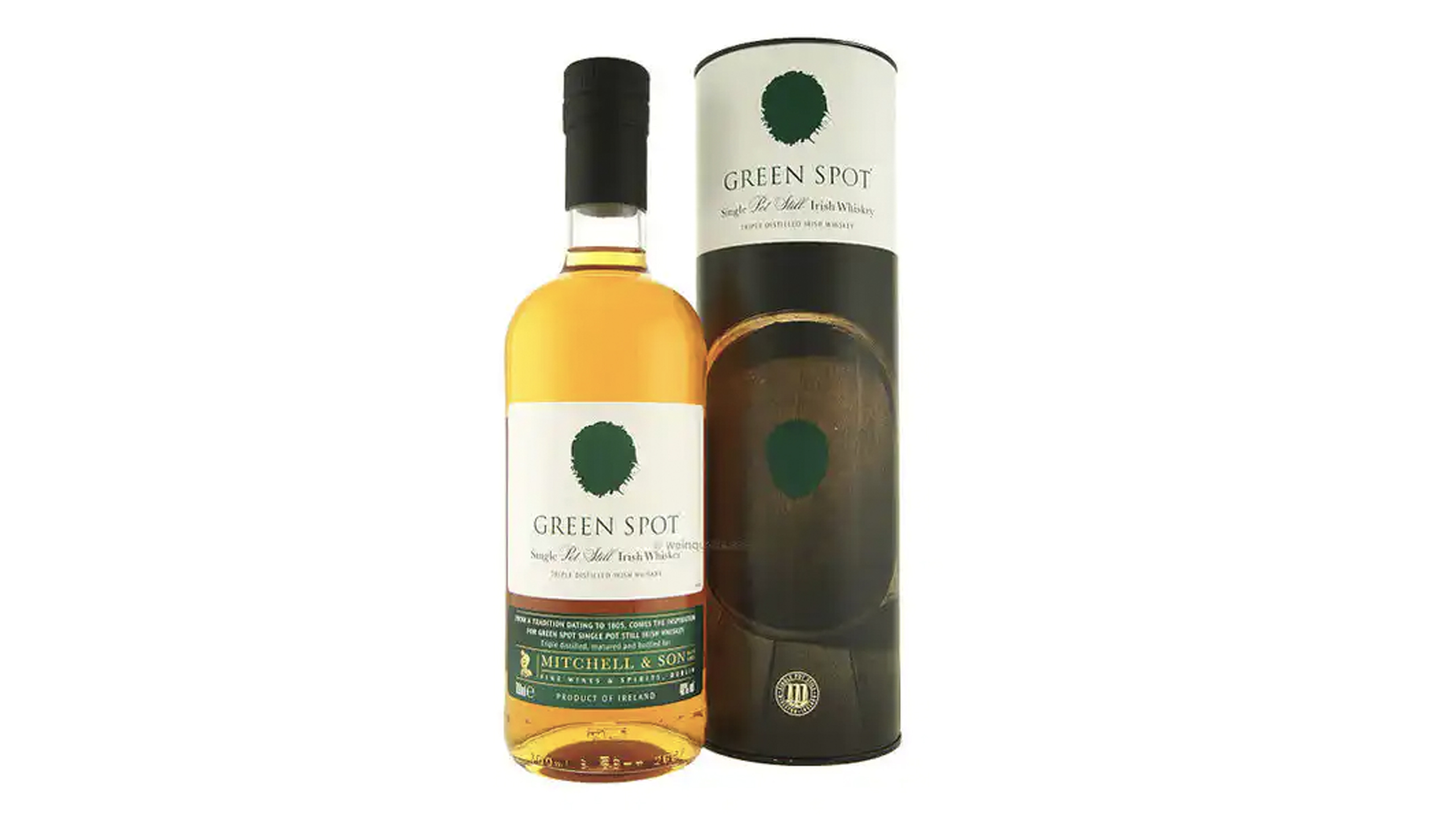
Yellow Spot, 92 proof ($90) – Vanilla, toasted oak, honey, dried fruit, and a hint of baking spices on the nose, with well-integrated flavors of milk chocolate, custard, white peaches and oak, with increasing oak spice on the finish. Captivating.
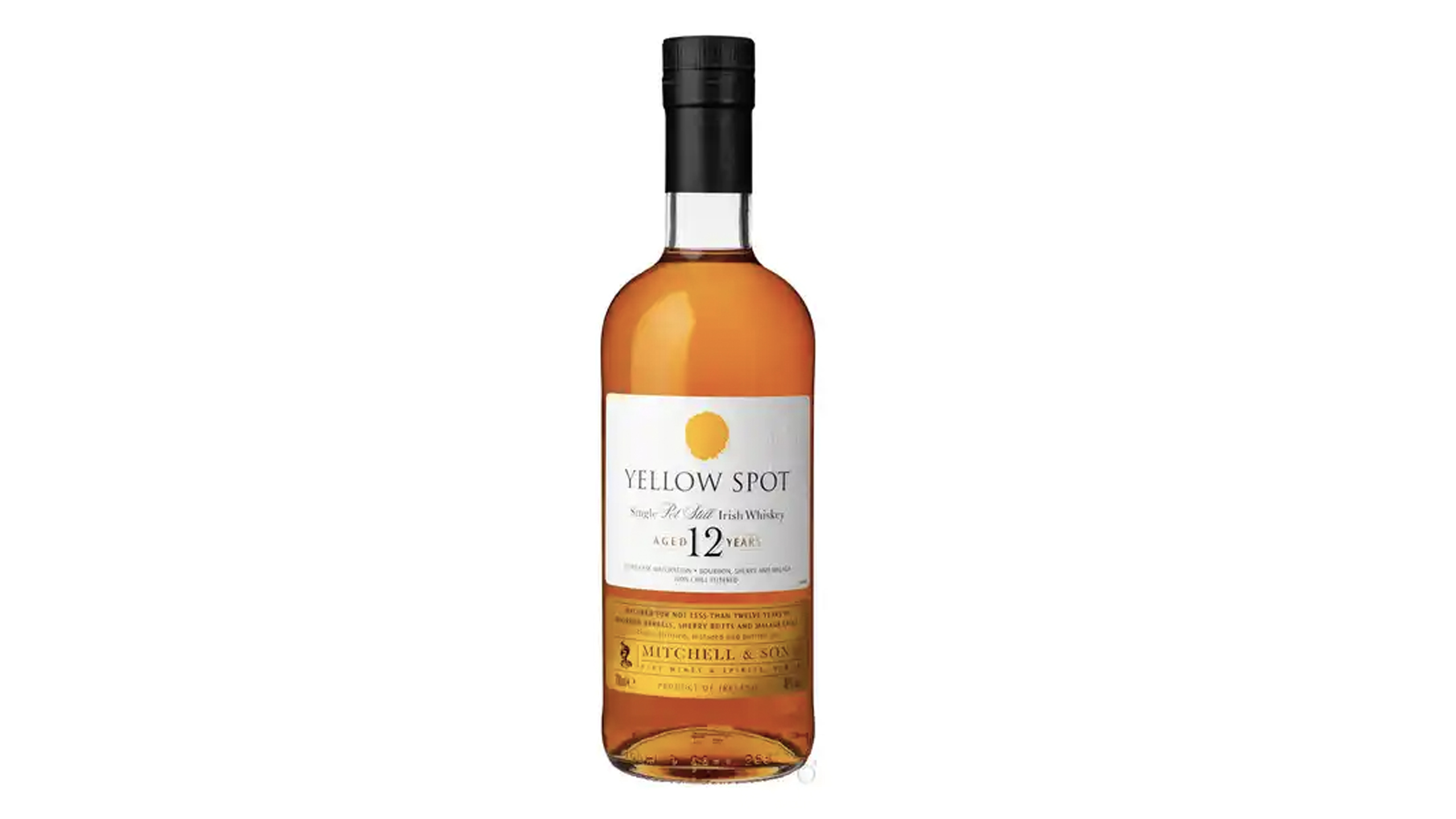
Red Spot, 92 proof ($120) – Vanilla, more pronounced oak, toasted nuts and red plum on the nose, then flavors of warm honey and biscuit, more red plum, some peppery heat, and a hint of cedar, finishing in oak and dried fruits. Less lush than the others, a bit more demanding.
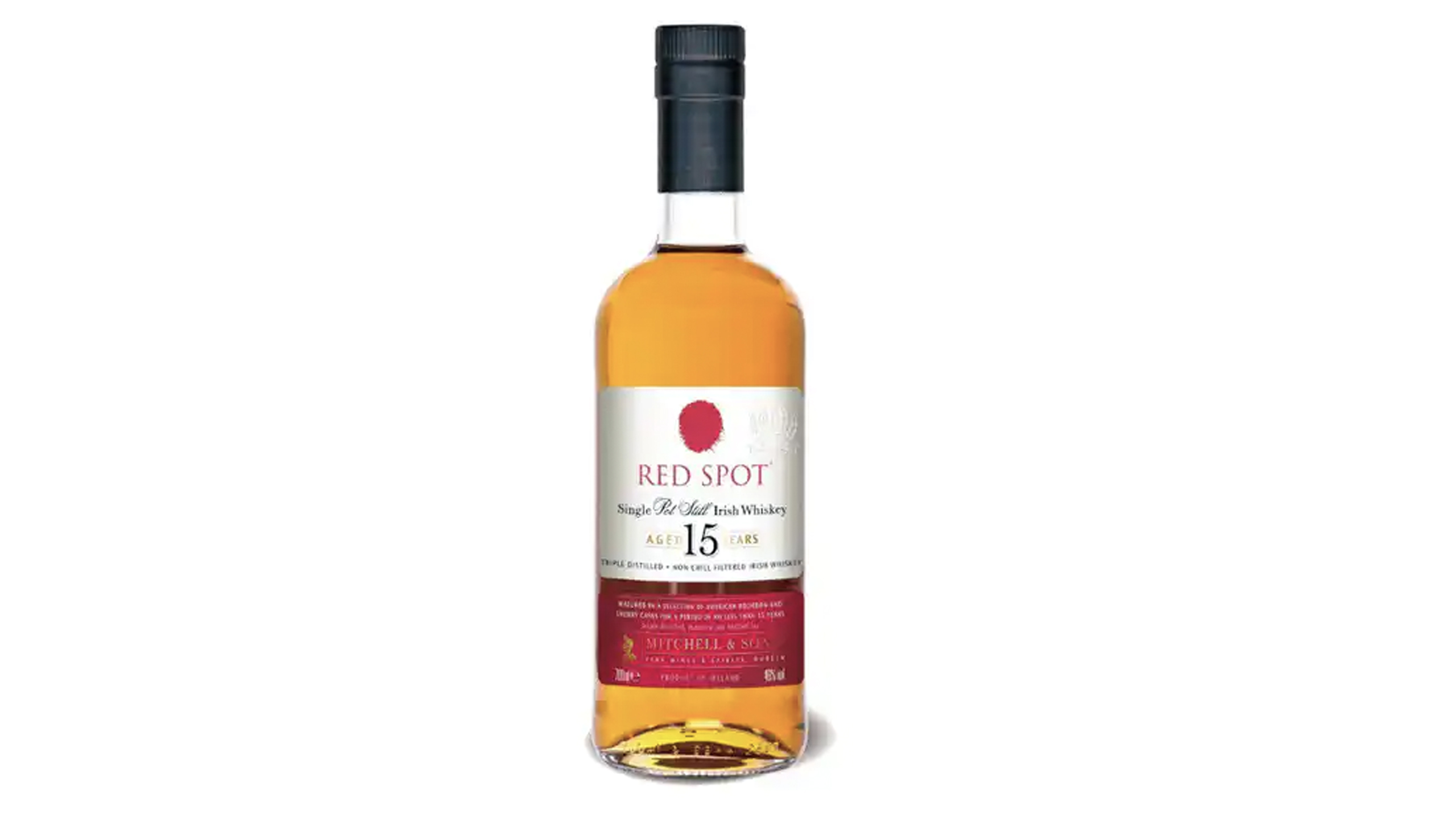
Blue Spot, 117.4 proof ($85) – Candied fruits, peppercorns, light baking spice and shaved wood on the nose (adding water brings out notes of violets), and youthful swagger on the palate, with a solid sweetness tempered with oil of cloves, mint, vanilla and light oak framing, sailing into a long, sweet finish. Some younger whiskies would seem busy with all that; but Blue takes it in stride.

